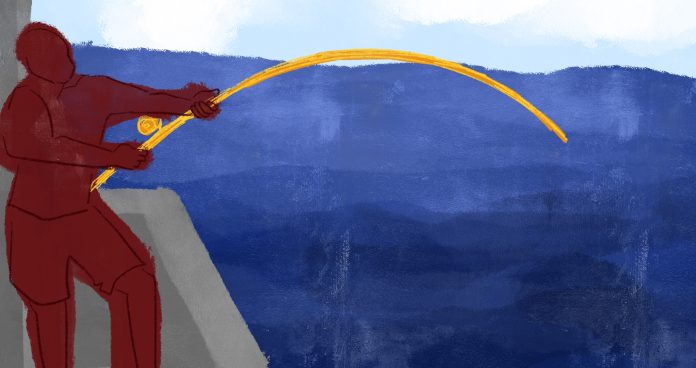Grace Ryu
Staff Writer
One of the biggest concerns of today is food distribution and security to support an ever growing population of people on Earth. It is becoming increasingly difficult to mass produce food without hurting the climate, resulting in the issue of how to prioritize global food production while sustaining our planet. A team of researchers proposed a possible solution to these questions through their research on the expansion of mariculture — the farming of marine organisms for food, medicine, and other uses directly from natural marine environments such as the ocean.
One of the researchers on the project was Dr. Christopher Free, a research faculty member at UC Santa Barbara’s Bren School of Science and Management. In their research paper, Dr. Free’s team explains how fishery reforms are not reliable enough to slow down climate change from mass food production. Meanwhile, mariculture has lower greenhouse gas emissions and requires less resources to maintain than fishery reforms, making it a sustainable and efficient way to produce enough food for the global population while also being mindful of climate change.
To understand this topic further, we must first dive further into the two main categories of mariculture: finfish and bivalve. The difference between them is that finfish mariculture requires feed made from wild caught marine species. According to Dr. Free, this is necessary to maintain the diet that predatory fish would normally have when living in the wild. Meanwhile, feed isn’t necessary for bivalve maricultures. Instead, they eat microorganisms in the ocean water. Because of the need to obtain food directly from the environment, bivalve mariculture is more vulnerable to the effects of climate change, such as ocean acidification.
“This would affect their ability to form their shells, which inhibits their growth,” said Dr. Free, regarding the ocean species bred in bivalve mariculture.
How would switching to rely on mariculture for marine-based meats over land-based animal meats be beneficial to the climate? According to Dr. Free, there is rapid technological development in making plant-based feed for finfish mariculture. Redistributing resources such as soy to finfish feed over wild-caught fisheries would emit less carbon emissions than using land for land-meat production.
Furthermore, fish species that were previously in danger of being overfished would be able to be conserved, for mariculture can preserve the life cycles of species in captivity. An example of this conservation is the Atlantic salmon, which were overfished due to their popularity.
“All the Atlantic salmon we eat are farmed because they were very overfished,” stated Dr. Free. With mariculture, it would be possible to breed fish that would not be able to be caught locally.
However, there are some challenges that would arise with mariculture. For instance, countries with little to no history of mariculture would have to transform their food systems, rather than adapt. This would mean they would have to thoroughly invest in training and infrastructure for production, which can be stressful on their economies. Thus, international investment would be necessary to target and promote mariculture. And, as for any environment, too many bivalves can strip water of microscopic life that are important to wild organisms, despite bivalves being the most environmentally friendly type of mariculture. Furthermore, finfish maricultures can result in nitrification of the ocean or the spread of diseases. Therefore, in these efforts, it is important that the best practices are followed and that the best policies are implemented.
“It’s important to have the best scientifically-defined practices for how much mariculture can occur in certain areas and how many individuals can be supported per mariculture,” Dr. Free explained. “Once the best practices are followed, there’d be an easing of the ability to get permits for farmers to develop mariculture in the area.”
While managing a piece of the ocean is very different from managing a plot of land, it is essential to learn from the mistakes made from land development and stay precautionary about the ocean. With careful planning and reforming, it is entirely possible for mariculture systems to be in widespread use around the world to promote sustainable food production. It may take an extensive global collaborative effort to achieve this, but many remain optimistic about the future outcomes.











